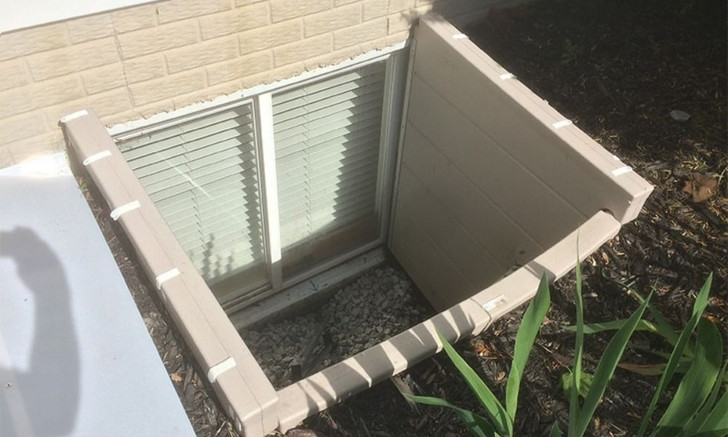Ever given your home's window wells much thought? No? That means they're doing their job—keeping water, soil, and pests out while letting the sunshine into your basement. But if you're interested, you have plenty of options to choose from. Learn about the different types of window wells and their benefits.
To Be Precise...
The window well is the hole dug in front of a basement window. Since it's below grade level, the well can be as deep as the window. Wells are dug in half circle or rectangular shapes and can be wider than the window itself. The shape is determined by the window's use. Semi-circles just let light in, while rectangular wells provide a means of escape from the basement or a place where first responders can enter.
Window well walls might be what you picture when you imagine a window well. These sturdy barriers hold back the earth around the well and consist of different materials. The material is important, so choose carefully.
Plastic
Plastic has the benefit of being cheap and relatively easy to install. Just dig your hole, stop by the hardware store, pick up a plastic wall cover, and stick it down there. Unfortunately, while you may save money in the short term, after prolonged exposure outside and under the pressure of the surrounding soil and water, plastic falls apart. It can look chintzy to begin with as well.
Steel
Corrugated steel is tough, strong, and has a cool industrial appearance. It's also relatively easy to install, is mostly leak-proof, and lasts longer; however, it costs more than plastic. Steel can last for 20 or 30 years, but depending on the weather, soil conditions, and more, that metal may eventually rust-and sometimes sooner than later. Also, unlike concrete or stone, you can't just patch up the holes or slap a coat of paint on it. Metal window wells are often chosen for their durability and ability to withstand heavy soil pressure over time.
Fiberglass
Fiberglass has staying power and can come in different designs. A faux stone appearance, for example, looks smart in any of the different types of window wells. Fiberglass is resistant to sunlight, water, dirt, and other factors. Some walls come with places to set plants and other items to spruce up your window well. They weigh almost nothing and are easy to install too, but that extra convenience costs more.
Concrete
For long-term peace of mind, go with a poured concrete window well. It has greater stability and lasts far longer than the others. It's a little more expensive, but you won't have to worry about replacing it for a very long time.
As a side note, the bottom of the well can be filled with gravel or other stone to provide better drainage, but only a low, single layer. Whatever you do, don't block the window, and be sure to add a window well cover to keep out water, leaves, pests, and more without blocking your light. And please consider Window Well Supply to be your go-to window well company!

 Lifetime Warranty On All WWS Covers
Lifetime Warranty On All WWS Covers
 Free Shipping On All Products
Free Shipping On All Products





 (262) 633-3707
(262) 633-3707

 info@windowwellsupply.com
info@windowwellsupply.com
